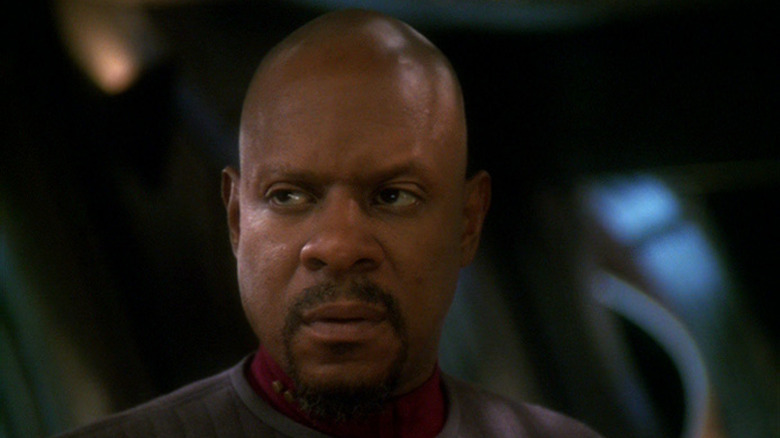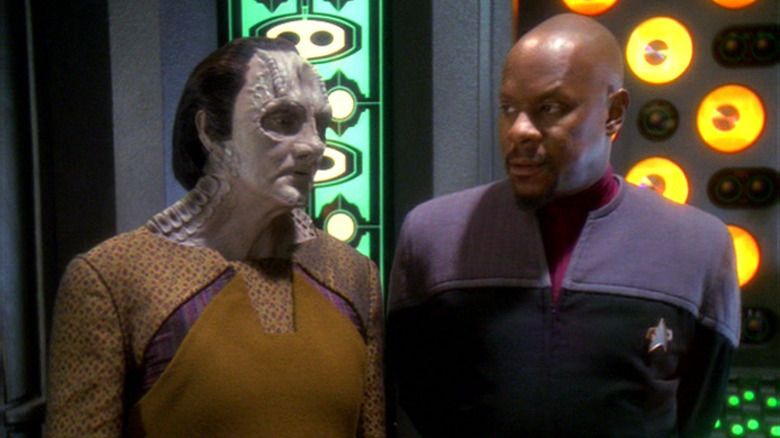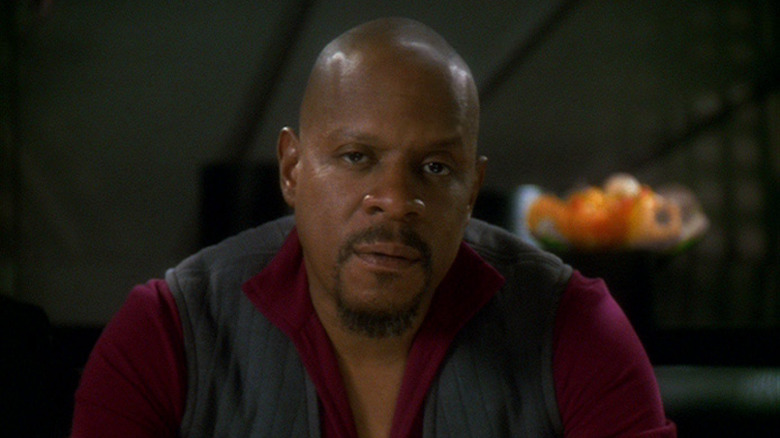How Star Trek DS9's Pale Moonlight Episode Snuck Troublesome Material Past Execs
"Star Trek: Deep Space Nine" is pretty unique among "Star Trek" shows in that it deals directly with war and goes to some very dark places with its characters, and no episode depicts that better than "In the Pale Moonlight" from season 6. The episode takes place during the thick of the Dominion War, which saw the Federation battling against Changelings, Jem'Hadar, Vorta, and Cardassians. (They also briefly fought Klingons while General Martok, played by John Garman Hertzler Jr., was replaced by a Changeling spy, but that was sorted by members of the crew dressed as Klingons.)
As the Dominion forces grow bolder and more violent, Captain Sisko (Avery Brooks) must find a way to convince the Romulans to join the side of the Federation and fight. Unfortunately, they have a pact of non-aggression with the Dominion, which makes his job that much more difficult. He ends up using subterfuge and has tailor/spy Garak (Andrew Robinson) help him manufacture fake proof of Dominion plans to overthrow the Romulans once they're done with the Federation. It's a messy business that's morally gray, and that's pretty far outside of franchise creator Gene Roddenberry's utopian ideals for Starfleet, but "In the Pale Moonlight" ended up being one of the series' best, albeit most controversial episodes.
In a retrospective on the episode for The Hollywood Reporter, "Deep Space Nine" writers Ronald D. Moore and Michael Taylor looked back on crafting an episode that would shake up the "Star Trek" universe, and revealed how they managed to sneak the episode past executives.
Thank goodness for Voyager
Prior to "In the Pale Moonlight," Starfleet captains had only ever been squeaky clean. Sure, Kirk (William Shatner) had his extracurricular affairs with every woman he encountered and Picard (Patrick Stewart) could be a little cold, but they were both paragons of virtue according to Roddenberry's vision. Sisko is in a very different situation on "Deep Space Nine," trying to win an intergalactic war and protect not only everyone on his space station but the entire planet of Bajor, which is right next to Deep Space Nine. The stress of constant casualty reports pushes him to act in ways he otherwise wouldn't, even bribing Quark (Armin Shimerman) with the valuable metal latinum and other favors.
Under the careful watch of Roddenberry's successor, Rick Berman, such moral ambiguity was rare, but Moore credits being able to create "In the Pale Moonlight" the way it was to Berman being busy with "Star Trek: Voyager," saying: "I think ['Pale Moonlight'] did kind of slip between the cracks in terms of there being a lot of focus on Voyager."
"In the Pale Moonlight" not only puts Sisko in the position of falsifying information and breaking an alien out of Klingon prison to create that information, but he's also involved with the assassination of a Romulan dignitary through Garak's actions. It's some really tricky subject matter for "Trek" to tackle, but that complexity is also what makes it so great.
Stripping down a captain — literally and metaphorically
Sisko is an incredibly complicated captain, and some writers initially thought that his character was a mistake, but his complexity is a big part of what makes him so compelling. In the episode, he breaks the fourth wall, talking to his personal log but addressing the audience pretty directly. He ends up stripping down out of his uniform as the episode goes on, removing both his Federation morals and baring himself, as Moore explains:
"It came in the same kind of epiphany of 'let's do it all in flashback.' Because once I had that frame, it kind of then defines everything within the [episode's] structure. So the whole business about him taking off the clothes, I don't remember where that came up, but it was a great metaphor for the whole thing. And as I set through the script in that framework, I knew that each scene was a step to hell for Benjamin Sisko in the past, because he was already in hell at the beginning."
In the episode, Garak points out that Sisko may have saved the entire Federation and that all it cost was the life of one Romulan, one criminal, and the self-respect of one Starfleet officer. In order to do what he thought was best and possibly save billions of lives, Sisko had to compromise his morals. If that's not fascinating science fiction, then what is? Thank goodness for "Voyager" taking up Berman's time, because "In the Pale Moonlight" is a "Star Trek" classic.


